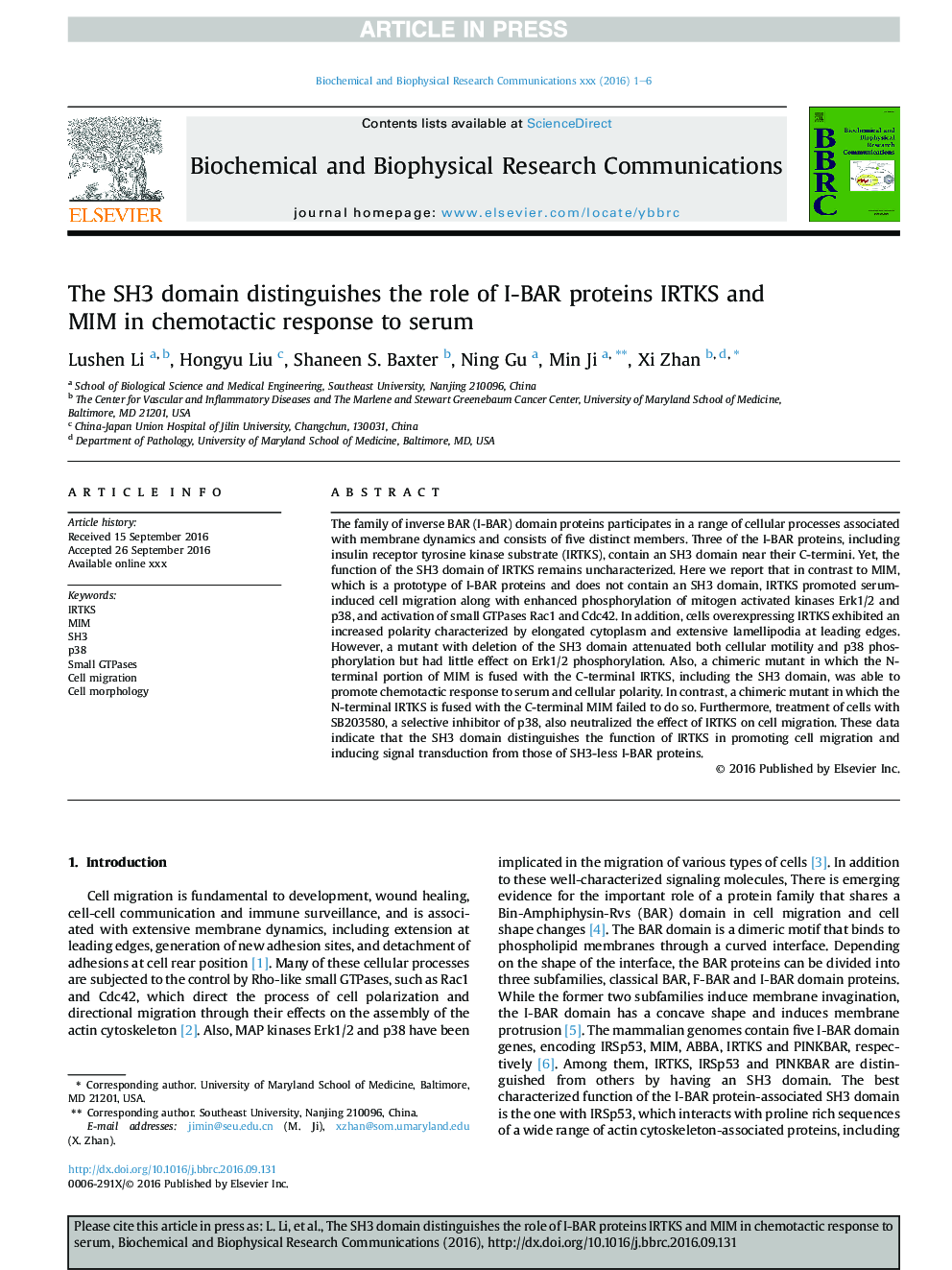| Article ID | Journal | Published Year | Pages | File Type |
|---|---|---|---|---|
| 5506549 | Biochemical and Biophysical Research Communications | 2016 | 6 Pages |
Abstract
The family of inverse BAR (I-BAR) domain proteins participates in a range of cellular processes associated with membrane dynamics and consists of five distinct members. Three of the I-BAR proteins, including insulin receptor tyrosine kinase substrate (IRTKS), contain an SH3 domain near their C-termini. Yet, the function of the SH3 domain of IRTKS remains uncharacterized. Here we report that in contrast to MIM, which is a prototype of I-BAR proteins and does not contain an SH3 domain, IRTKS promoted serum-induced cell migration along with enhanced phosphorylation of mitogen activated kinases Erk1/2 and p38, and activation of small GTPases Rac1 and Cdc42. In addition, cells overexpressing IRTKS exhibited an increased polarity characterized by elongated cytoplasm and extensive lamellipodia at leading edges. However, a mutant with deletion of the SH3 domain attenuated both cellular motility and p38 phosphorylation but had little effect on Erk1/2 phosphorylation. Also, a chimeric mutant in which the N-terminal portion of MIM is fused with the C-terminal IRTKS, including the SH3 domain, was able to promote chemotactic response to serum and cellular polarity. In contrast, a chimeric mutant in which the N-terminal IRTKS is fused with the C-terminal MIM failed to do so. Furthermore, treatment of cells with SB203580, a selective inhibitor of p38, also neutralized the effect of IRTKS on cell migration. These data indicate that the SH3 domain distinguishes the function of IRTKS in promoting cell migration and inducing signal transduction from those of SH3-less I-BAR proteins.
Related Topics
Life Sciences
Biochemistry, Genetics and Molecular Biology
Biochemistry
Authors
Lushen Li, Hongyu Liu, Shaneen S. Baxter, Ning Gu, Min Ji, Xi Zhan,
